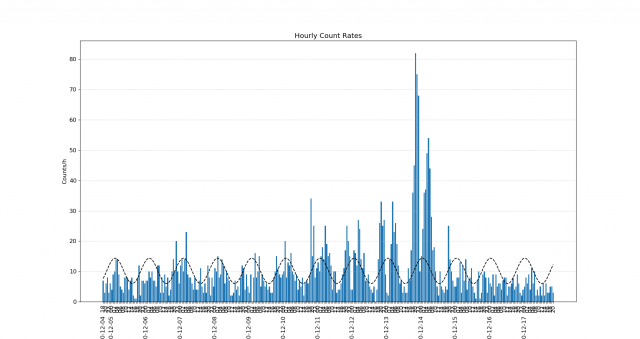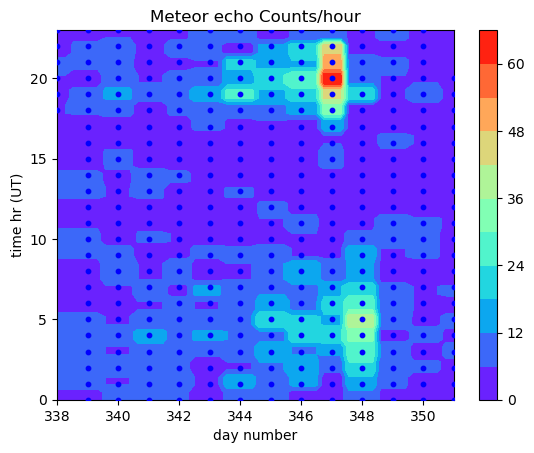Forum Replies Created
-
AuthorPosts
-
 MarjonParticipant
MarjonParticipantMike
I am located in Westerham, Kent and have a good view of the sky from the south-east to the west.
I just use a basic antenna for this with no LNA. It is in a horizontal configuration and positioned in the loft space, which may be why I tend to get a weaker signal. I have a couple of other types of antenna, located in better positions, that I use for other radio astronomy projects. One of which uses an LNA module for hydrogen line applications.
As far as non-meteor events are concerned, the software removes signals that don’t contain at least one frequency near an estimated reference-frequency, hopefully keeping the meteor echoes. Its, not perfect though. I will have to try any determine what percentage of signal are actually removed.
Mark
 MarjonParticipant
MarjonParticipantHi,
It’s good to have an opportunity to compare my results with other observations and recording methods.
I began running my set up in early 2019, concentrating on the major meteor showers. However, this year I have left it running full time.For the recent Geminids I recorded just over 80 counts (raw data) for the peak on the 13th December (day#347), which I found to be at 20:00hrs. There was also some activity in the early hours of the 14th. Processing my data to reduce interference, reduced the peak count to 64. See images below.
I am recording my data using a Raspberry Pi 4B, running GQRX and python logging code, connected to a 3-element Yagi. I then process and plot the data using python on a laptop running Ubuntu Linux.
Regards,
Mark

-
AuthorPosts
